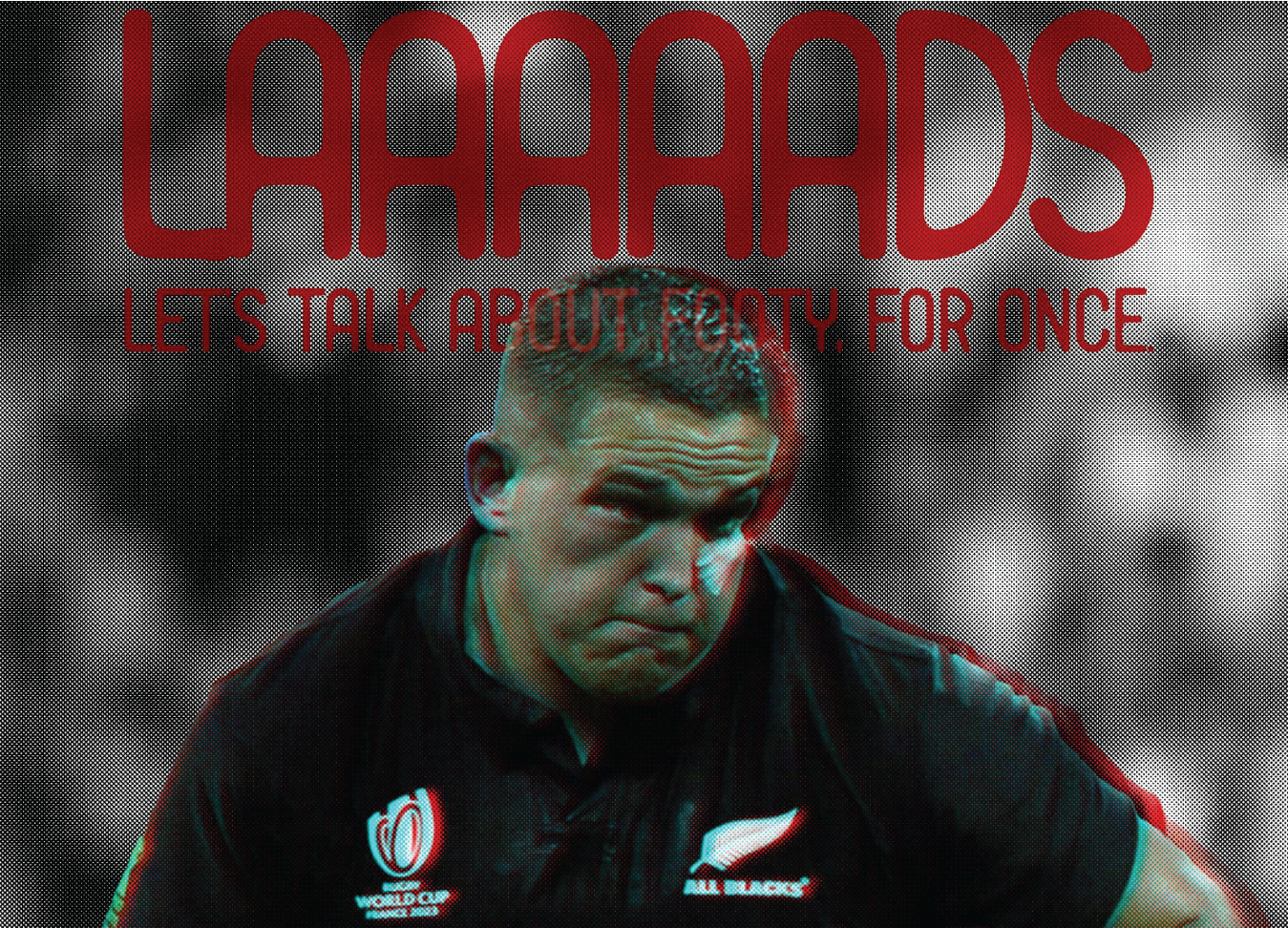
We’ve been talking too much politics lately. Let’s talk some footy. Lads, lads, lads!
Referees, aye? Or is it more the rules they’re called to apply? Ethan De Groot has been condemned for putting his boulder of a shoulder through a Namibian player’s skull. It was only a shoulder to the head but after a three-match ban was handed out for what seemed to be an unlucky tackle, it might as well have been labelled as such. I don’t think referees suck, I am a Crusaders fan after all, so is it a case of poor discipline or is World Rugby just being too tough?
In 112 years of dominating international test rugby, the All Blacks had just three red cards. Cyril Brownlee in 1925, Colin Meads in 1967, and Sonny Bill Williams in 2017. Some may say the All Blacks were good boys (that was weird, I’m sorry). Then in 2019, Scott Barrett kicked off an avalanche of reds for our men in black. This was followed by Ofa Tu’ungafasi in 2020, Jordie Barrett in 2021, Angus Ta’avao in 2022, Scott Barrett again this year, and my main man Ethan De Groot in the last game they played.
That means that in the past 5 years ALONE, the tally of reds is double the amount of those earned in the aforementioned 112 years. As a Kiwi, this does just seem like an All Blacks thing but it’s actually a trend hitting other countries too. At the last Rugby World Cup in 2019 alone, there were 8 red cards handed out over the tournament. At the previous three world cups before then, there was a combined total of 5 red cards given out. To further accentuate the point I’m making, there have already been 3 red cards at this World Cup and we’re only halfway through pool play.
All of these numbers are a bit overwhelming. So, what can they actually tell us? Since 2019, World Rugby has been reforming its laws for, among other things, better protection of players. In 2021, they released a head contact process for referees to follow. It basically lowered the acceptable height of tackles, making ‘accidents’ more harshly looked upon.
For a red card to occur, the collision with the head has to be highly dangerous. High danger initially and naturally sounds like a pretty high threshold. But, here’s the extensive list for a collision with the head to constitute high danger: direct contact, lack of control, high speed, upright and dynamic, leading head or arm, and a swinging arm.
The more factors there are to constitute a dangerous tackle, the more likely it is players will be shown a red. This long list has only a few mitigating factors: a sudden drop in the ball carrier, a late change due to another player, and an effort to wrap. After watching De Groot’s tackle be made more dangerous by a sudden drop in the player as they were being tackled by a third party, but still receiving a red, it seems these mitigating factors are just as ambiguous as the criteria for a red themselves. I mean, a very similar tackle to De Groot’s performed by a French player wasn’t shown a red against Uruguay, despite a sudden drop in player in the exact same circumstances.
Consistency appears to be out the window. Tongan player, George Moala received a 5-match ban for a tip tackle. By these previously mentioned rules, this was fair but tough. However, when Owen Farrel, an English player, committed an arguably more serious offence, his match ban was rescinded. Many claimed this was a bias towards Tier 1 rugby nations, some even said it was racist. I don’t think the reality quite reached these claims, but it seems some sort of bias was at play. Even with De Groot, it seemed uncertain what punishment he would get as other players had been let off with a yellow for the same error in the same tournament. There were even consistency issues between the refs themselves with this decision. He was originally shown a yellow, which was later upgraded to a red.
If there’s a lack of consistency in punishment, there’s less acceptance of the rules that World Rugby enforces (with an iron fist). Players, coaches, and fans alike depend on the consistent application of rules to ensure a level playing field. When this playing field is uneven, you get calls, if not, shouts, of bias. This consistency fosters a sense of fairness that permeates every aspect of the game. Games continuously run the risk of having referees become the centrepiece through erratic decision-making. I don’t blame the referees, I blame the ambiguous rules they are called to apply. Consistency is clearly an issue.
With all this considered, it’s no wonder Ian Foster had to remind himself to “just breathe” after De Groot was handed his red card. Punishments have taken a huge leap and with it, uncertainty and disapproval have increased.